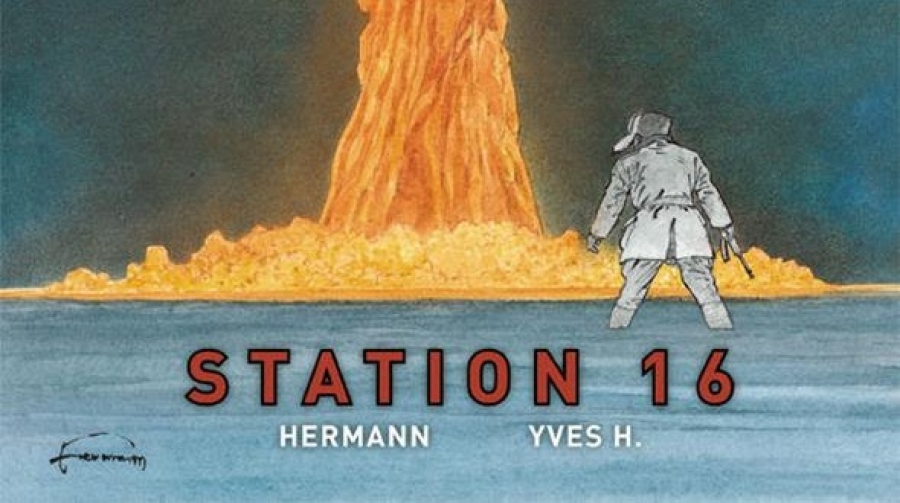Station 16 is a taut, creepy, and inventive slow burn of a graphic novel. It starts off simple, almost mundane, then everything gets turned upside down and around and just like the characters, you don’t know which way is up, or what is right and what is wrong. Station 16, written and illustrated by Hermann and Yves H., who are also father and son, thrives in these grey areas, where reality and the unknown and the impossible blur together in the cold, desolate Russian landscape. As unforgiving as the climate is the ordeal a small band of Russian soldiers finds themselves unable to escape from after answering a distress call from the long-dormant Station 16, located out in the middle of nothing.
That is truly all you need to know, though I will throw in that Russia used to do its fair share of nuclear testing, but that’s all you’ll get from me. The plot is full of twists and turns and elegant, sly set-ups and reveals, and, at times, you can piece things together as they happen, and other times you are totally caught off guard. Either way, the story that unfolds is incredible. Through casual, sleight dialogue you begin to understand and empathize with the characters, particularly the rookie who finds himself at the center of an inescapable nightmare. In a way, the story is remarkably contained, and in another way it is remarkably expansive, which means no matter how you look at, Station 16 is remarkable.
Hermann and Yves’ art is stunning, capturing the confusion and terror of the inexplicable, as well as the coldness of Russia, both in its weather and in its stoic soldiers. The color palette is almost completely grey and white, bringing to the forefront the emptiness of the soldiers’ surroundings and the harsh conditions that plague them on their mission. The minimalist art style and colors reminded me of Steve Lieber’s work on Whiteout, another mystery set against a punishing clime. Since the majority of the book is swathed in muted tones, when flashes of bright colors appear, they dazzle the eye in their brilliance and often boggle the mind in their disparity. There are numerous wonderful, double-page spreads that perfectly display the capabilities of true visual storytelling, and the translation by Yves flows smoothly and unfettered by any language barriers.
This is the second book I have reviewed from Strip Art Features (SAF), published in the States through Dark Horse, the first being Carlos Trillo and Eduardo Risso’s Red Moon. Both are excellent books, with unique stories and memorable art, and I hope in the future to see even more from SAF and Dark Horse’s collaboration, because amazing stories and art can come from anywhere. Station 16 packs the punch of a thriller and the shock of an intelligent horror movie rolled into one book, and once Hermann and Yves get their tale going, there is no stopping their visceral, visual tour-de-force until you reach the final page. Then, you’ll instantly want to read it again, just to make sure you figured everything out, and you’ll enjoy it just as much the second time around.

